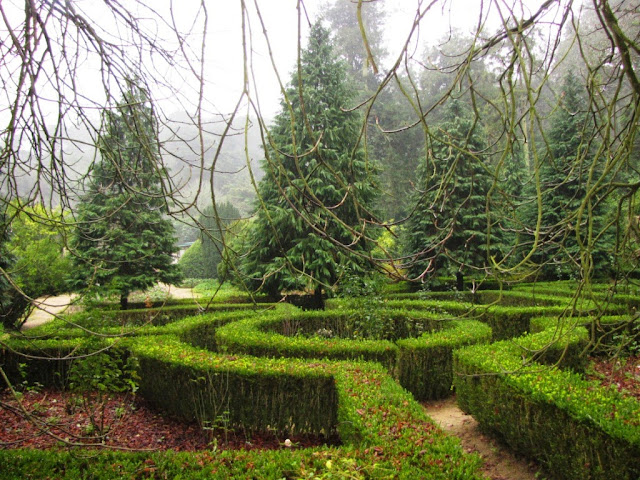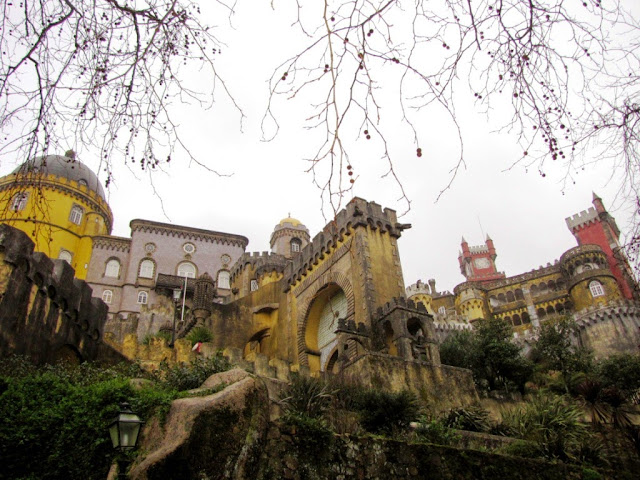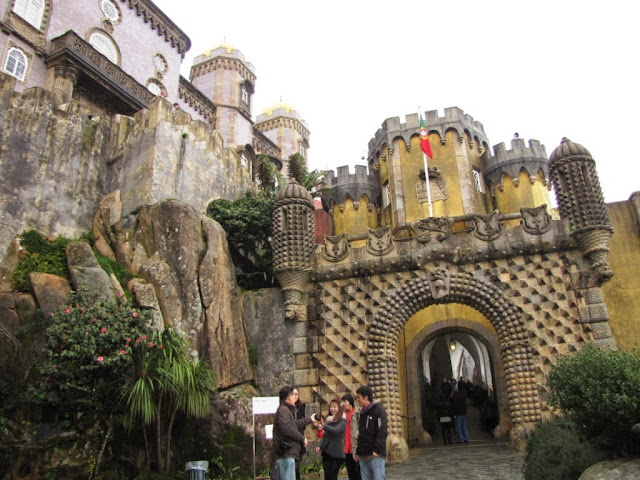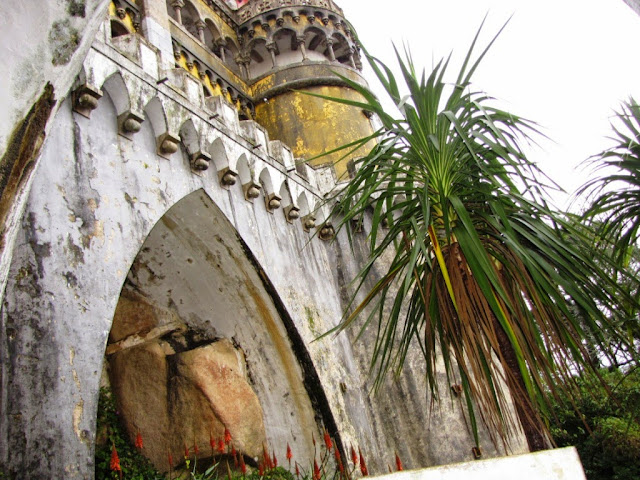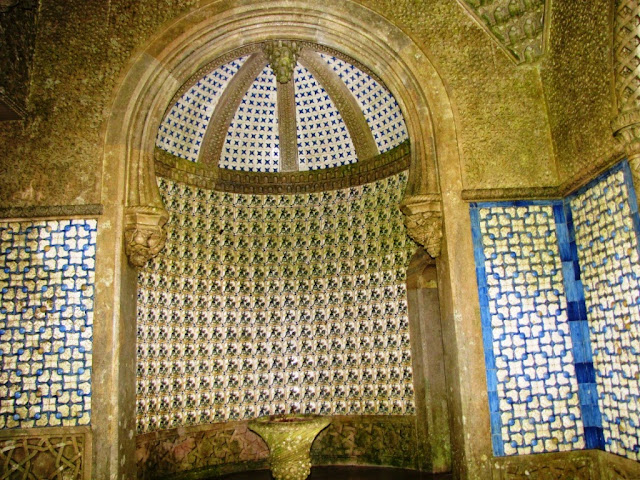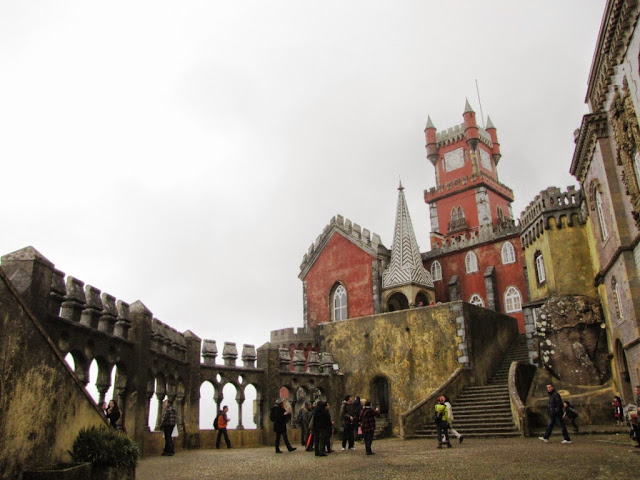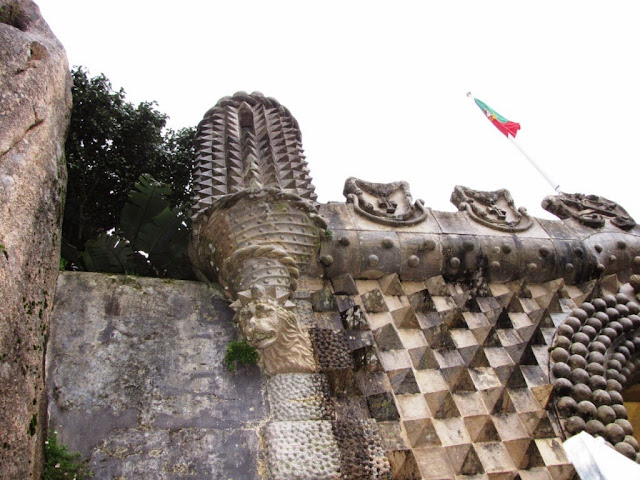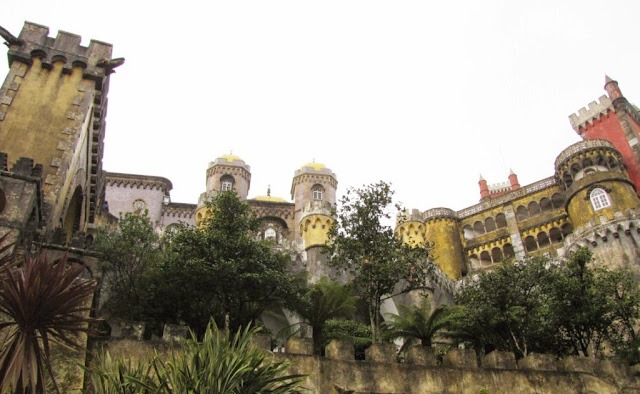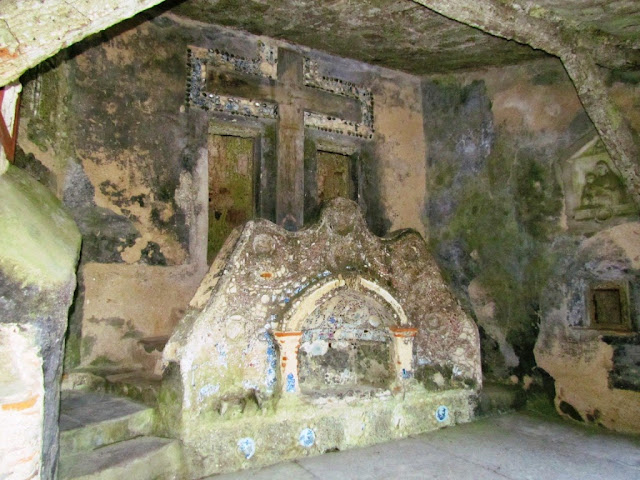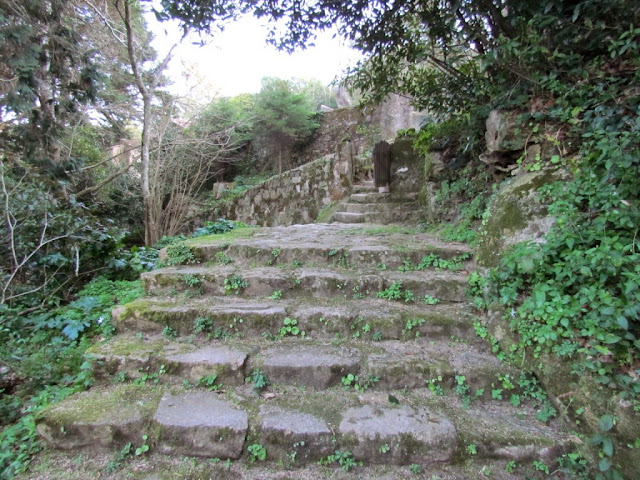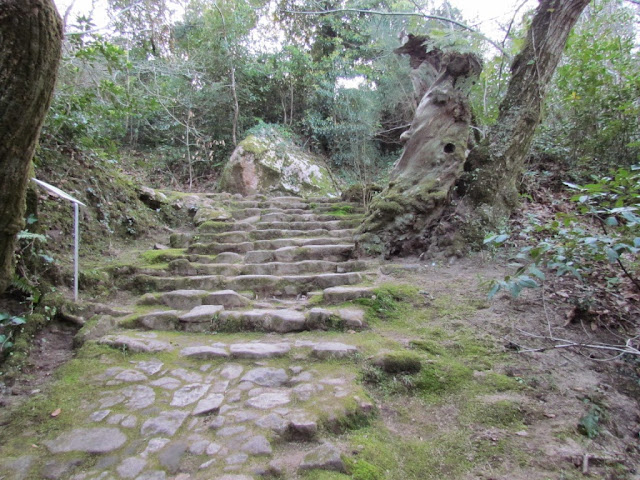SINTRA
N 38º 47' 50''; W 9º 23' 26''
It is the seat of a municipality with an area of 319.23 km² and 381 728 inhabitants (2015), subdivided into 11 parishes. Its population represents 13.37% of the metropolitan total and 19.82% of the total of Greater Lisbon. The municipality is limited to the north by the municipality of Mafra, to the east by Loures, Odivelas, and Amadora, to the southeast by Oeiras, to the south by Cascais, and to the west by the Atlantic Ocean. It acquires importance in the national context as it is the second-most populous municipality in Portugal, after Lisbon, and the village with the most inhabitants, followed by Cascais and Oeiras. Among its most important centers are, in addition to the village of Sintra itself, the cities of Queluz and Agualva-Cacém.
The highest point in the municipality, which is also the metropolitan area, is in Pena, in the Serra de Sintra, and rises to 528 meters in altitude. Surrounding them are platforms that do not exceed 200 meters and are embedded in several streams that demarcate the landscape.
The village of Sintra is notable for the presence of its romantic architecture, resulting in its classification as a Cultural Landscape of Sintra, a UNESCO World Heritage Site.
Climate
Sintra has, in general, a temperate Mediterranean climate that may tend in some areas towards the ocean, also delimited by the Sintra – Carregueira mountain range. The factors that contribute to the characteristic climate of the region are determined by the relations with the Atlantic and the Tagus Estuary, and by the Serra de Sintra, which acts as an orographic barrier, forcing the air masses to rise and causing the condensation of the raisins. moist sea air from the north and west. Thus, in general, the municipality does not have very pronounced thermal amplitudes, with very low rainfall summers characterized by abundant humidity in the air, a high degree of cloudiness, and frequency of fog. The lowest temperatures occur in January, in the mountainous regions and in the extreme northeast of the municipality, with an average annual air temperature of around 15ºC. For their part, the highest ones are generally registered in August. The rainfall is strongly influenced by the presence of the Serra de Sintra. The annual average humidity is 79%, thanks to its situation to the sea and the presence of a forested mountain range, with no prevalence of thunderstorms and dew days.
BY TRAIN : LISBOA ( ROSSIO ) / SINTRA
TRAINS EVERY 20 MINUTES ( 30 MINUTES FROM LISBON TO SINTRA )
FROM SINTRA RAILWAY STATION THROUGH
1- TOWN HALL; 2 - SETEAIS PALACE,
3 - SINTRA NATIONAL PALACE,
4 - HISTORIC CENTRE AND
5 - QUINTA DA REGALEIRA.
TOWN HALL
GPS N 38.79879; W 9.38791 )
SINTRA HISTORIC CENTRE
Sintra is known for its many 19th-century Romantic architectural monuments, which has resulted in its classification as a UNESCO World Heritage Site. Although its heritage in buildings and nature is the most visible face of the historic individuality of Sintra, a whole literary heritage has made the area a legendary reference in Portuguese culture. It has become a major tourist center, visited by many day-trippers who travel from the capital Lisbon. In addition to the Sintra Mountains and Sintra-Cascais Nature Park, the parishes of the town of Sintra are dotted with royal retreats, estates, castles, and other buildings, including the medieval Castelo dos Mouros, the Pena National Palace, and the Sintra National Palace.
( PALÁCIO NACIONAL DE SINTRA )
https://www.parquesdesintra.pt/en/parks-monuments/national-palace-of-sintra/
HOW TO GET THERE:
BY CARIf driving to Sintra, take the IC19 (from Lisbon), IC30 (from Mafra), or EN9 (turning off the A5 motorway to Cascais).
GPS Coordinates
38º 47’ 50.50” N 9º 23’ 25.87” W
PUBLIC TRANSPORTATION
Lisbon > Sintra
By train (CP) – Take the Sintra Line
Departure stations:
• Estação do Oriente
• Estação do Rossio
• Estação de Entrecampos
Sintra (historic centre) > National Palace of Sintra (historic centre)
By bus (Scotturb)
• From Sintra Train Station
Scotturb buses No. 434 and 435, run from the railway station to the National Palace of Sintra.
ON FOOT
Sintra Train Station – National Palace of Sintra (10-15 minutes).
The Sintra National Palace (Portuguese: Palácio Nacional de Sintra), also called Town Palace (Palácio da Vila Vila=Town) is located in the town of Sintra, in Portugal near Lisbon.
It is the best-preserved medieval Royal Palace in Portugal, having been inhabited more or less continuously at least from the early 15th up to the late 19th century. It is an important tourist attraction and is part of the Cultural Landscape of Sintra, designated a World Heritage Site by UNESCO.
https://www.parquesdesintra.pt/en/parks-monuments/national-palace-of-sintra/
QUINTA DA REGALEIRA
Quinta da Regaleira is an estate located near the historic center of Sintra, Portugal. It is classified as a World Heritage Site by UNESCO within the "Cultural Landscape of Sintra". Along with the other palaces in the area such as the Quinta do Relógio, Pena, Monserrate, and Seteais palaces, it is considered one of the principal tourist attractions of Sintra. The property consists of a romantic palace and chapel, and a luxurious park that features lakes, grottoes, wells, benches, fountains, and a vast array of exquisite constructions. The palace is also known as "The Palace of Monteiro the Millionaire", which is based on the nickname of its best known former owner, António Augusto Carvalho Monteiro
PALÁCIO DE SETEAIS
The Seteais Palace is a neoclassical palace located in Sintra, Portugal. It is now a luxury hotel, restaurant, and a tourist attraction included in the Cultural Landscape of Sintra, listed as a World Heritage Site by UNESCO.
THE MOORISH CASTLE
( CASTELO DOS MOUROS )
PALACE OF PENA
PALÁCIO DA PENA
The palace stands on the top of a hill above the town of Sintra, and on a clear day, it can be easily seen from Lisbon and much of its metropolitan area. It is a national monument and constitutes one of the major expressions of 19th-century Romanticism in the world. The palace is a UNESCO World Heritage
PALACE OF MONSERRATE
N 38º 47' 24''; W 9º 25' 12''
It was classified as a Property of Public Interest in 1978 by the Portuguese state and a World Heritage Site Cultural Landscape by UNESCO in 1995 as part of the whole of the Sierra de Sintra. It is located in the Council of Sintra (Lisbon District) and constitutes one of the most interesting examples of Portuguese romantic art. It features a large circular tower, bulbous domes, and exotic themes in the decoration.
In its surroundings is the Monserrate Park, 33 hectares of exuberant centenary trees, exotic and thematic gardens (Mexican, Japanese, rose garden ...), a valley of ferns (with numerous specimens of the so-called tree fern), the first great meadow of grass planted in Portugal, a waterfall, romantic ruins, ponds, and pergolas.
As large arboreal specimens, it is worth highlighting the presence of Araucaria from Bidwill, Araucaria heterophylla, or Northfolk and Kauri from Queensland. It also has good specimens of Swamp Cypress and a spectacular specimen of Metrosideros excelsa or Iron Tree or New Zealand Christmas Tree, with abundant and striking red blooms in early summer.
SÃO PEDRO
SANTA EUFÉMIA
CAPUCHOS CONVENT
(Convento dos Capuchos)
The Convent of the Friars Minor Capuchin, popularly known as the convent of the Capuchos (Portuguese: Convento dos Capuchos), but officially the Convento de Santa Cruz da Serra da Sintra (Convent of the Holy Cross of the Sintra Mountains), is a historical convent consisting of small quarters and public spaces located in the civil parish of São Pedro de Penaferrim, in the municipality of Sintra. Its creation was associated with the Portuguese Viceroy of India, D. João de Castro, and his family, but became a pious community of reclusive clergy that continued to occupy cramp humble spaces in the complex, until the religious orders were abolished in Portugal.




































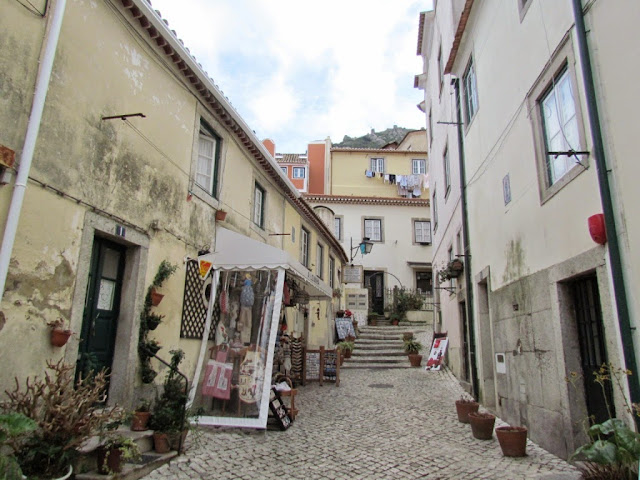







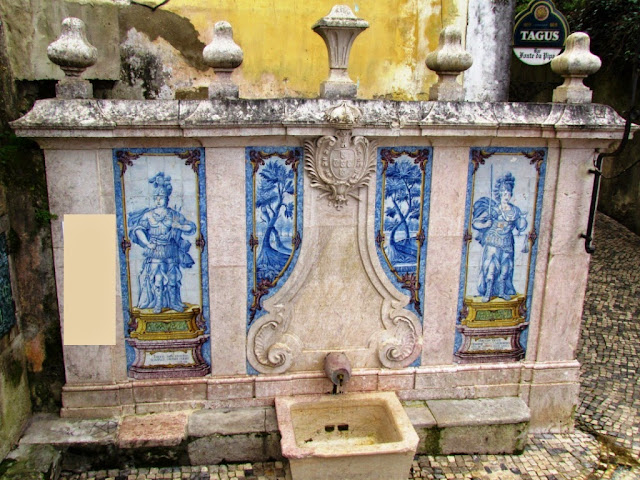















































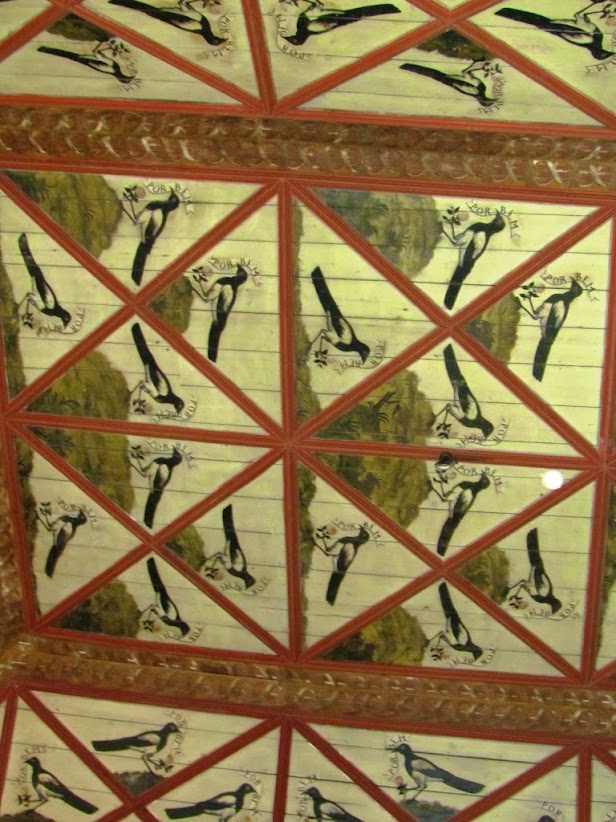





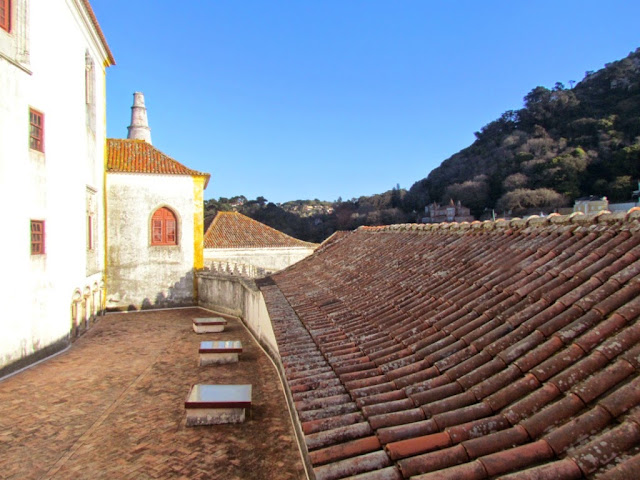











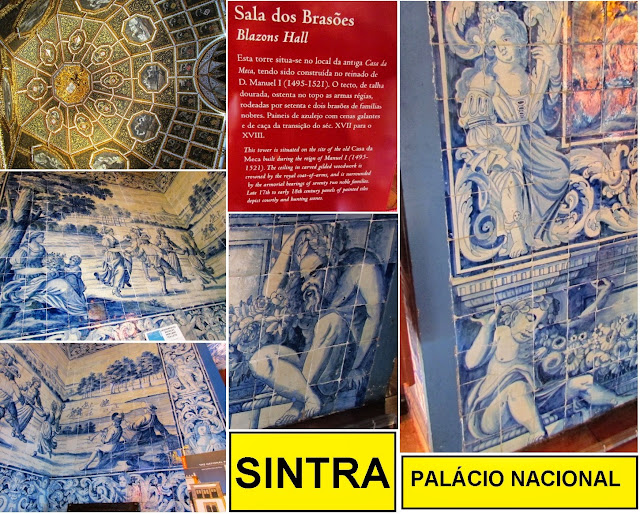




































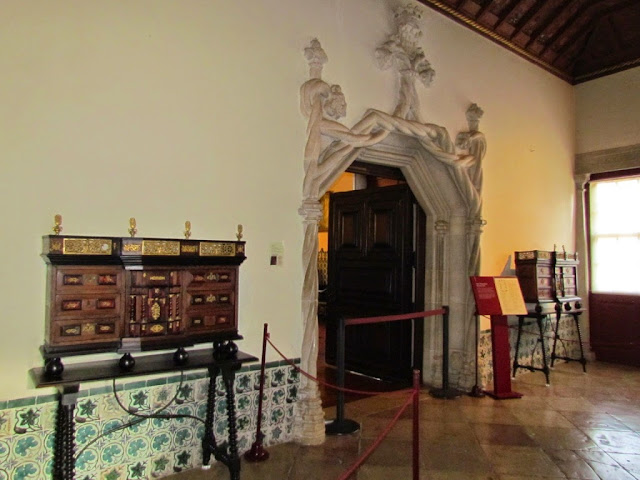



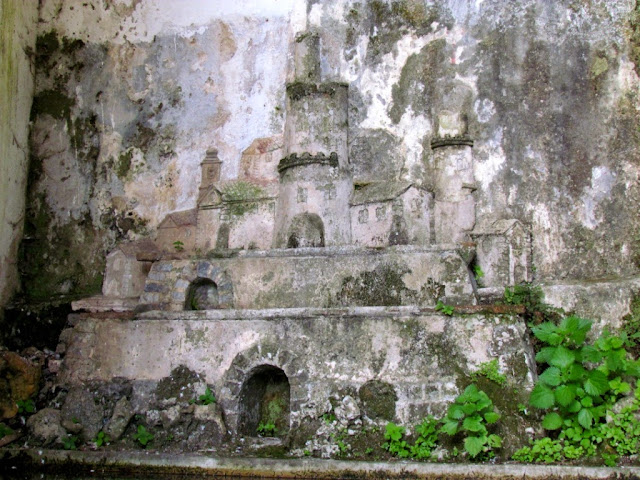





























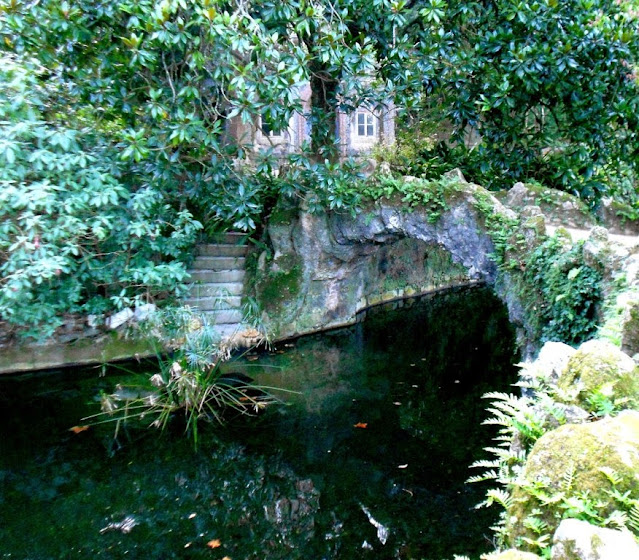

























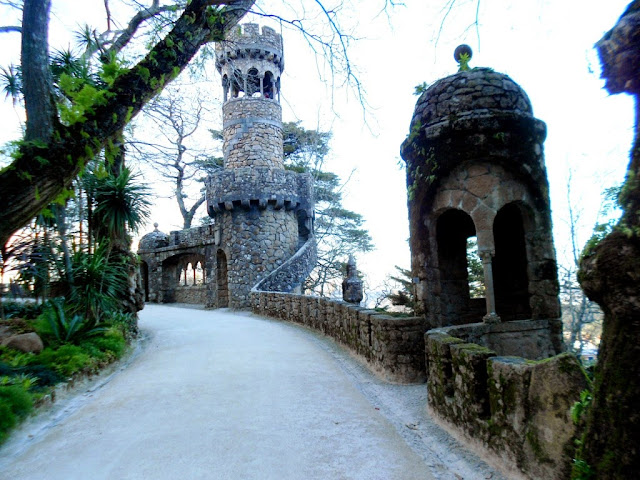









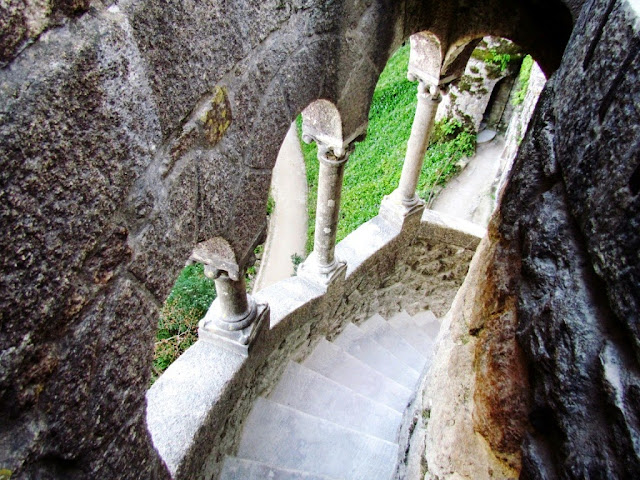









.JPG)
.JPG)



.JPG)

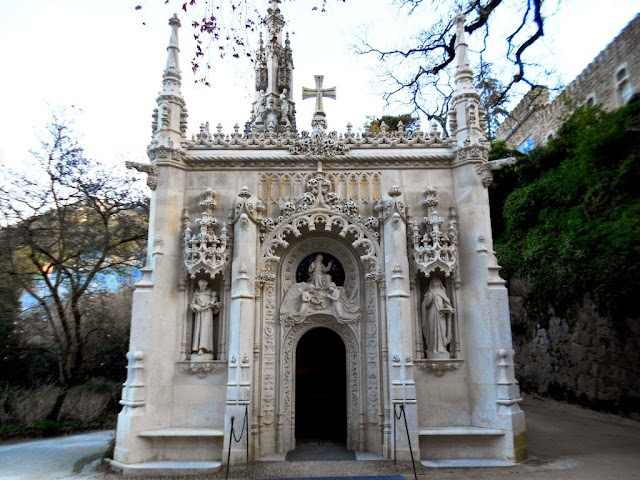





















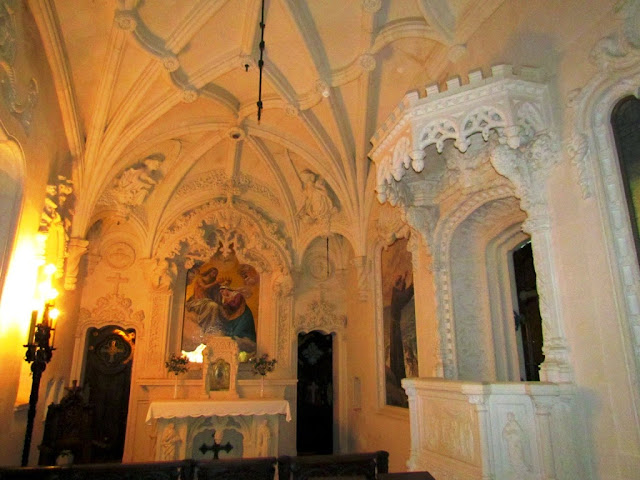



























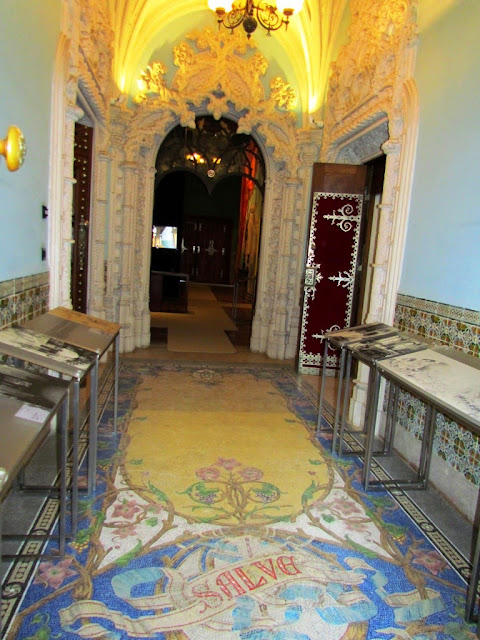





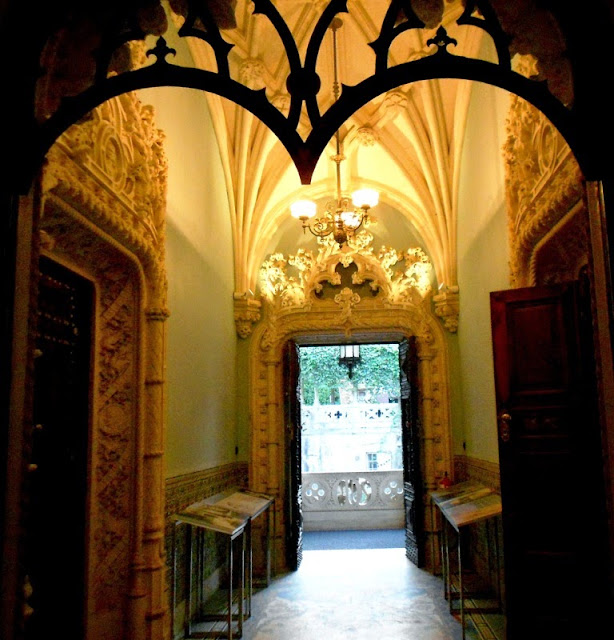

























































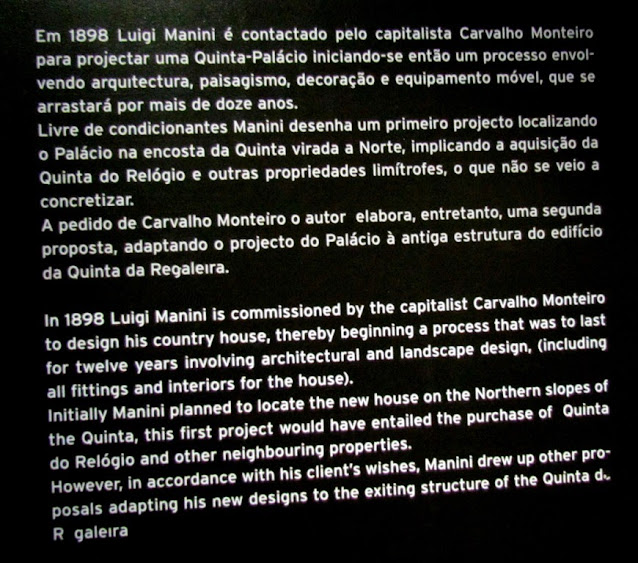






.JPG)


.JPG)

























